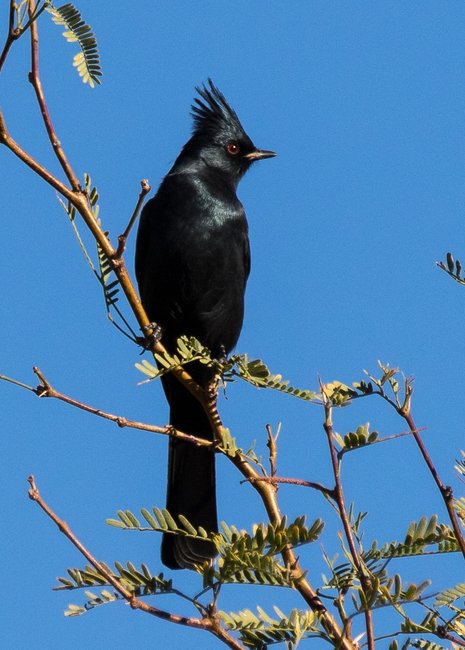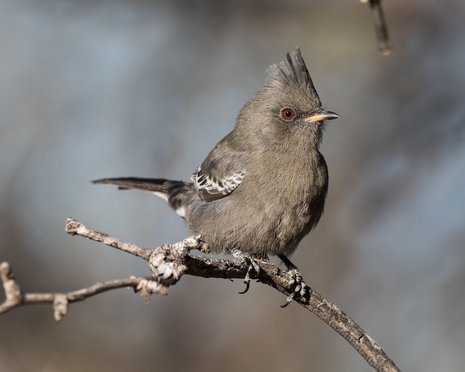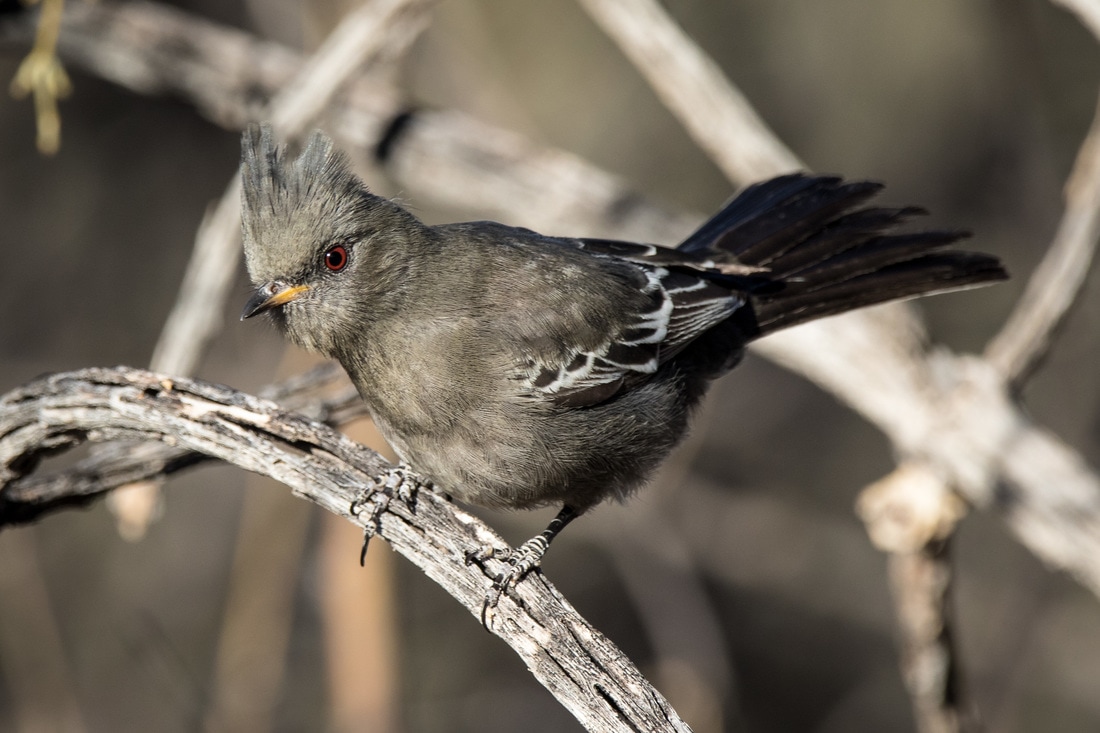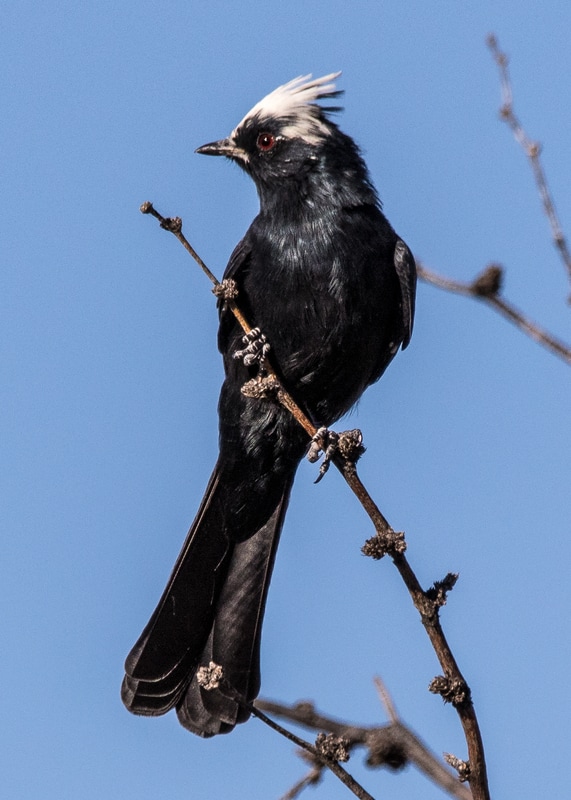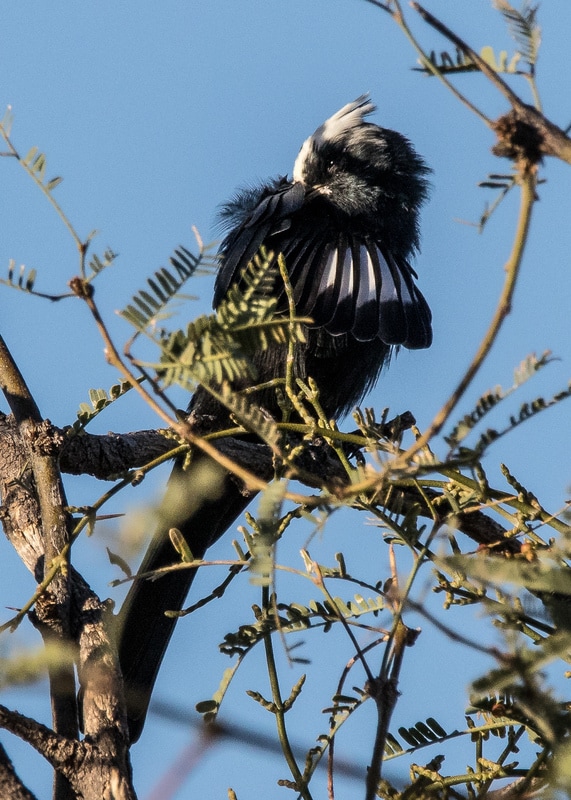Phainopepla
The Phainopepla is a crested silky-flycatcher (Order Passeriformes, family Ptilogonatidae) resident of the desert southwest and woodlands. The male is black and shiny - hence the name which comes from the Greek for shining coat. The female is gray. They eat berries, with a big helping of mistletoe berries that resides as a parasite in mesquite trees. Their range is Mexico, Southern California (save the coast) and Southern Arizona. They are regulars here in Tucson, and are commonly seen at Sabino Canyon and Agua Caliente Regional Park.
References: The Cornell Lab of Ornithology, Tom Grey Birds, and the Audubon Guide to North American Birds.
References: The Cornell Lab of Ornithology, Tom Grey Birds, and the Audubon Guide to North American Birds.
Albino variant male at Sabino Canyon
A partial albino Phainopepla is a recurrent winter visitor to Sabino Canyon, photograph above. For more detail, see my blog posting from fall 2016. It turns out that partial loss of pigment is not uncommon in birds, and can be confusing when trying to identify individuals. There is a nice posting on partial pigmentation (melanin reduction) in the Sibley Guides, available online, click here. The author goes through terminology, and different displays of color loss, using the Northern Cardinal as an example.
Note that the second image shows a normal feature of the male, white patches on the underside of the primaries, evident here as the bird preens himself.
Note that the second image shows a normal feature of the male, white patches on the underside of the primaries, evident here as the bird preens himself.
